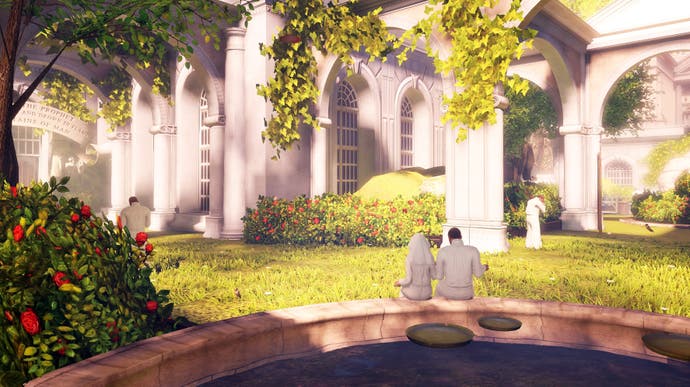The best places to live in video games
Gone home.
Looking at places to live in games, it would be easy for the most magnificent, pompous and elegant palaces and castles to dominate any appreciation. But there is plenty of room to appreciate those residences that are tucked away, perhaps underrated, that are not major hubs or destinations and that are only subtle intrusions. Some draw a curious sense of attachment from players, eliciting a sense of pseudo-topophilia - a close relationship with a virtual land or place. The resulting effect is sometimes enough to cause the sentiment: if this place were real, I would live there.
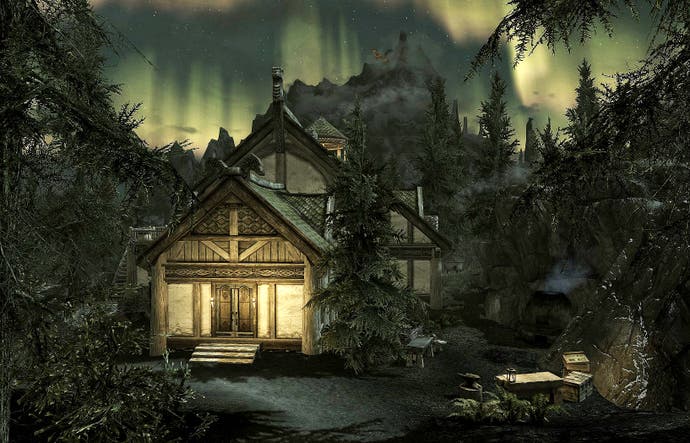
Right in the corner of the Hinterlands in Dragon Age: Inquisition is the Grand Forest Villa. Its position in the landscape is not obtrusive or jarring, and in turn makes use of the surrounding Hinterlands as its grounds and gardens. Not only does it look fantastic in its geographical context, the residence fits the medieval-fantasy context, oozing grandeur and splendour. But it also serves a purpose: in the Dragon Age lore, it was built for a special friend of the Arl of Redcliffe to allow him to stay near Redcliffe Castle, but far enough away to not raise eyebrows or induce scandal. Designed to be elegant and bold, the Villa - which is a generous term - would have been a beautiful place to live. Even though there are no obvious living spaces on show to relate to they are there - probably within the thick stone walls that add a strange, yet weirdly complete juxtaposition of woodland villa aesthetic next to defensive fortress.
Its semi-open nature permeates its design. Opening up sides and boundaries has the effect of bringing the outside, inside - nowadays, think about homes that have entire walls made of glass to bring their garden 'inside' - blurring the boundary between indoor luxury and the pleasantness of nature, landscapes and plants. It also opens up expansive and brilliant vistas from the Grand Forest Villa, the importance of which is demonstrated by the design of designated viewing decks or points offering fabulous views over the lush and rolling Hinterlands landscape.

Nearby the Villa is a waterfall that literally falls through the residence into a shimmering lake, ensuring the sound of running water provides a continual soundtrack and the lush greens of plants and pine trees offset the greyness of the stone and natural rock - themselves merging into one another beautifully. The Villa's own gardens come in the form of courtyards, which are fabulous culminations of spaces: one embracing the outdoors with a totally open central space complete with a feature tree, and a cloister-esque walk around it leading to a viewing platform (turret); the other a more inward-focused courtyard space within a roof and frames capturing views outward, but still maintaining a central focal point.

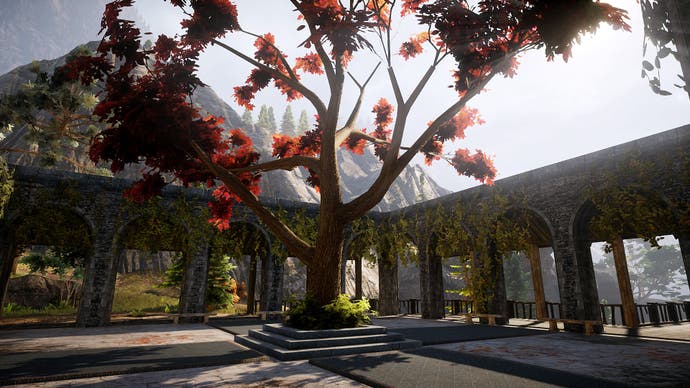
Also visible from the covered courtyard, alongside the traditional merlons and embrasures in the fortified walls, are angled roofs, ornately finished that provide a homelier feel, contrasting the defensive fortifications. There is something almost Frank Lloyd Wright-ian about these angles and rooflines - in fact the whole Villa is like a medieval version of Lloyd-Wright's Falling Water house - as they draw the eye, create symmetry and order and form that is exquisite in its design and appropriate for the site's setting. Combine this with incorporating the bare rockface and hillside for aesthetic and defense purposes, and the Villa has a near complete make up of beauty, function and character.
This excellence in residences is spread throughout Inquisition. It would be easy - and safe - to pick a spot in cultured Orlais or the glamour of the Winter Palace. But put these to one side and there are plenty of others to choose from. The Villa Maurel and Chateau d'Onterre in the Emerald graves, for example, are incredibly attractive, semi-hidden places to drop anchor. Their relatively-undiscovered nature comes from their abandonment and the way they are being ever so slowly left to nature's devices - though not overrun - as the ancient elven land smothers the 'High French'-looking architecture. Indeed, these places are grand, spacious and ornate, but their state of disrepair and emptiness appeal to their mystery and beauty as places to live. Here, perhaps because of the overgrowth, the plants are more obviously identifiable, but also add their own overall character to the place, very much heightening the sense of seclusion-in-nature and being in the depths of the landscape.
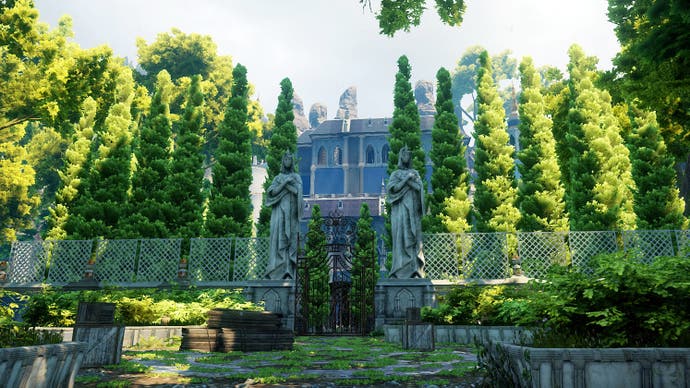
One of the finest locations in Red Dead Redemption is the wild and lush landscapes of Tall Trees. It is an unassuming place, not a major hub or destination, but it quietly played its part and its deep-in-the-woods feeling had a cool feel to it. Log cabins thrown about the landscape, gorgeous woodland and lakes and a seamless crossover and transition between lush landscape and snowy, harsh mountain- and hill-side environment, Tall Trees maintains its wild beauty but also shows signs of the inevitable reach and influence of the pioneers. As an area, it'd be easy to place a house in, but to keep in with the context of the times and the lands, one of the more solid-looking hunting lodges would be an attractive residence but so would the small and rugged Manzanita Trading Post.

Setting down here feels safe despite the location in the woods. It has a steady supply of goods and people due to the train station and a merchant. With the constant stream of supplies and the gorgeous, semi-removed-from-society location, it's a great spot for outdoors-y people. However, in the long run it may be worth ensuring a sturdy log cabin is the main residence rather than the cloth tents - this seems dangerous and downright reckless.

Manzanita Trading Post provides a neat balance of hunting lodge-lifestyle, safe escapism and the American dream values of venturing farther afield into the wilderness and claiming it. The gorgeous surroundings would constantly provide one of the most aesthetically pleasing landscapes to live in, while also providing a respite from the stresses of pioneer-town life.
If it's too isolated though, a case could be made for MacFarlane's ranch or Beecher's Hope. The cattle farm lifestyle seems relaxed (on the whole), there are still people in the area, and there is a oneness to be had with the landscape and a life made out of it. Even in such a vast, unforgiving landscape, such attractive places to live are clearly and pleasingly present.

The town centre in BioShock Infinite's Colombia is a beautiful, joyous and stylish place, and - with the caveat of not having to subscribe to the attitudes of the society - would be a fine place to live. In the first instance, the Garden of New Eden is a tranquil place and an environment easy to imagine escaping to for peace, quiet and contemplation. The gardens come complete with flowering rose or camellia bushes, climbing plants, ornate architecture, sculptures, bare foot-pleasing lawns and water features - all the things that make a garden pleasant and attractive. Or, in this instance, a lot of common characteristics people would like in their own garden. At least, assuming this is a public garden, living in a nearby house or above one of the shops in the market would be ideal.

The more-populated New Eden Square area has a warm, lively feeling to it both literally from the sun, but also environmentally. It is a joyful, colourful and idyllic place with shops to service the inhabitants and gathering spaces for socialising. Everyone seems happy and pleasant. It certainly does the job initially of welcoming people to a 'heaven on earth' type society. There is a distinctly utopian feel to the communal area and the aesthetic brings about a certain, strong sense of nostalgia. There is something about looking back fondly on time periods and their characteristics that, though they are comfortably in the past, are still easy enough to imagine being immersed in.
Everything about the buildings, roads, paths and open spaces makes Colombia, and this part of it in particular, a splendid place to live. The Roma-esque architecture with colonial American influences makes it an architecturally desirable place to live and provides a compelling backdrop to life, so much so that one wouldn't know the whole city was floating. Of course, the distasteful and discriminatory undertones of the place make it a culturally bankrupt place to live. In summary, the location is excellently designed, vivid, full of friendly folk and serviced by lots of shops and facilities and gardens, but the culture very much tarnishes it.

What Remains of Edith Finch presents a ridiculous but wondrous, fun and mysterious place to live in the form of the Finch house. Grounded in a believable reality, it also has magical, fairy-tale and fantastical qualities, and this is obvious instantly, from just seeing the house's silhouette. It is immediately striking due to its unique outline and shape, and instantly one knows it is no ordinary home. It has been added to and modified and extended and converted, much like Quentin Blake's Mrs Armitage's bicycle, so much so that it looks on the cusp of failing and falling over, yet miraculously stays intact, as if it's held together with magic, rubber, hopes and dreams.

It is isolated in a dense woodland and coast-side location but seems perfectly at home in that position, not feeling overly dangerous, exposed or vulnerable. Accessible by a boat journey grounds the property in a distant landscape, and the walk through the woods gives a heightened sense of arrival and anticipation. Being nestled in a lush landscape provides an incredibly pleasant setting at the front and encourages an interaction with nature on every journey to the front door, while views out the back, particularly from the swinging seat, and winding walks to the telescope and through the trees demonstrate perfectly what a prime location the house has.
The property seems content in its proximity to the wild landscape and complements the homely feel that grows as the house is explored. This is enhanced further by all the secrets and hidden areas. These changes not only transform rooms - each unique arrangement, decoration, look and story reflecting the character of the inhabitant - but, by extension, the whole character of the house. On top of that, they have also been executed in a rustic, hand-crafted and imaginative way. This hand-worked nature and improvised feel changes the atmosphere of the house to a quirky, fun and mysterious one, with every route through it feeling different and exploratory. What results is a place that has magic weaved throughout it providing experiences so vastly different in each room. Free from the Finch curse, and despite the tragic nature of the vignette stories, the house itself would be a quirky and truly unique place to live, and its nature-bound site and constant stream of surprises and stories would entertain for years.
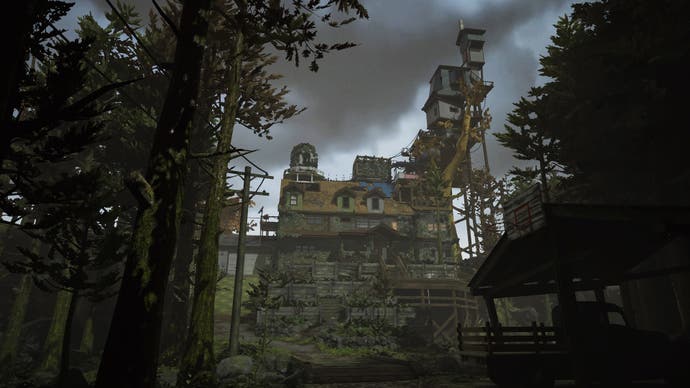
One place that has to be visited in Skyrim's main storyline is the Thalmor Embassy. Seemingly perched up on a high mountain plateau, near Solitude, only accessible by navigating a winding, taxing track, it is a formidable looking place and immediately strikes visitors with a cold grandeur - literally and in its design. As a functioning embassy, it is perfect for hosting intimidating gatherings and clandestine meetings where the design and structure of the place itself can influence and assist in coercion or persuasion with its powerful first impression.
The whole aesthetic of the building looks like a cross between Scandinavian styles - which prevail throughout Skyrim - and Japanese styles. The slight bow in the rooflines as they drop down is the clearest sign of the latter but also not enough to ground it only in that style. The site's design is neatly and clearly arranged, oozing formality and structure redolent of official buildings and places in our world that, like the people, have to make a solid first impression that leaves a mark. The use of dark stone as the primary building material makes the embassy pop out of the perma-snow landscape, and also gives it a daunting and powerful appearance which would have an immediate impact visually and aesthetically. The stone continues inside, giving off a hard feeling; there is no warmth or softness overall, only through details such as rugs and drapes. As a residence, the interior might need work.
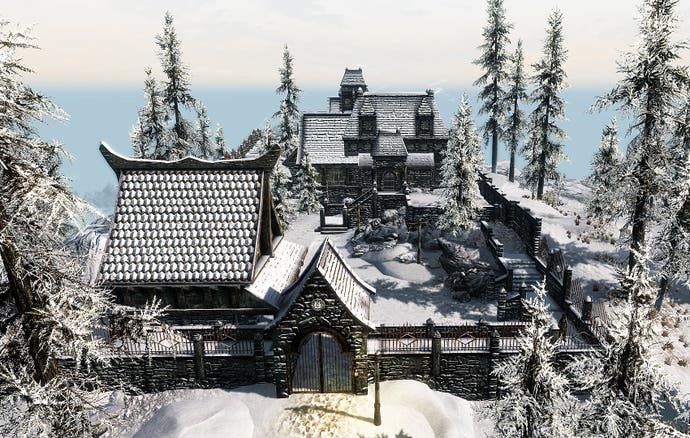
Living there would be ideal for those with a preference for seclusion but also luxury. The inhabitant would get the benefit of the all the design of the building in the same way - though there is some flexibility to soften it, as always, using plants, ornaments and material changes - as well as getting the most out of its location and site. It is situated near enough to Solitude to send your staff off for supplies and receive them in a timely manner, but is remote and 'upwards' enough that it is safely private. The walls create a strong, hard boundary all the way around the property and anchor the place into the mountain, however, it is permeable in areas with solid walls exchanged for fences - though these still seem geared toward intimidation.
And the landscape seems to permeate through as well, with the mountain's treeline seemingly continuing through the property a little. This helps give the place context, but also enables the juxtaposition of the powerful spruce-like trees of the landscape and the power that emanates from the embassy. The vistas and views that can be enjoyed from the embassy are breath-taking and expansive. Siting the embassy here was no rushed decision, and everything works neatly together to form an imposing property that fits the landscape and executes its purpose extremely well.
A fine alternative to the embassy in Skyrim would be Lakeview Manor. Also quite remote, this property, when built, has a warmer feel to it and an understated pleasantness that would make it a magnificent place to live. Indeed, it can be fully kitted out by the Dragonborn and finished splendidly to create a property of utter countryside gorgeousness. It is quite grand, but still isolated and off the beaten track enough to give it a rustic feel. The building itself demonstrates a mix of styles lifted from the real world, but that's not necessarily a bad thing, and it successfully creates its own interesting and site-appropriate aesthetic. The building, with a wooden frame construction, infilled with lathe and plaster walls, and crossed horse-head gables is Saxon in style. However, it is also reminiscent of a Beowulf-style meadhouse with its length, central chimney and high-pitched roof. This aesthetic gives it a feeling of being hand-crafted, with every corner of the property showing effort, almost to extent of being tactile. It is a spacious place and has flexibility in its interior, but generally feels a much warmer and homelier place than the embassy.
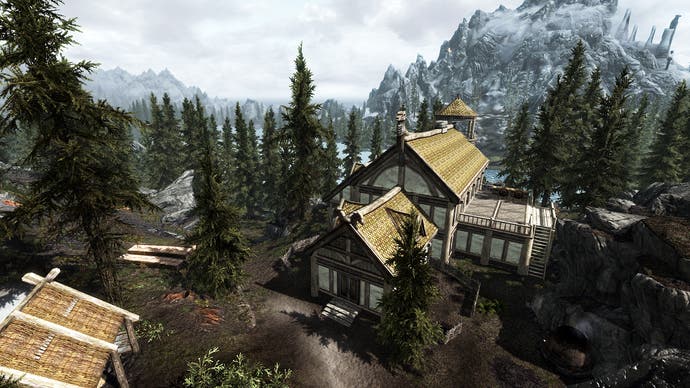
There is also no hard boundary to speak of and the neighbouring landscape is welcomed in. The only caveat is it also brings a forest full of giants and wolves that bit closer - but perhaps that's the lands way of making the owner earn their prime spot of real estate, tempering its benefits and delights with a whiff of danger. With the nearby land used as growing spots for food, beehives, gardens and functions, such as timber and fishing, there is a clear kinship and relationship with the land the property encourages - it isn't just placed on the landscape but is connected to it and works with it (something difficult to master in our real world design approaches).
The combination of mountains, Lake Ilinalta (which almost feels like a fjord) and the fir/spruce forest, complete with scrubby vegetation with berry plants, is a powerfully Scandinavian-esque. This is encapsulated by the Manor's viewing deck and doorway on the upper level outside, strategically placed facing the lake to create an impactful view straight away when walking out the door. So, while it is a large property and not a small and cosy hidey-hole that's hidden, Lakeview Manor has an understated grandeur and warmth to it which, combined with its wonderful place in the landscape, makes it an enviable spot, and it's no wonder the land is purchasable. Even the Dragonborn's spouse comments that the house is "perfect".
Finally, if one had to live a life in stereotypical paradise, Uncharted 4's Libertalia would be the place. Embracing the life of a pirate, at its peak in piracy's golden age, would be raucous, unbridled fun. Probably quite dangerous, but fun, loud and full of reckless abandon. Even as Drake explores the ruins of the place, it has a vibrancy and life that permeates it. The secretive, exotic location is as jealousy-inducing as they come - despite the lawlessness, inevitably bad services and healthcare.
Naturally, there could be a strong case made for living in one of the New Devon properties. The large stone mansions are adorned with ornaments, marble and equipped with vast dining halls and libraries. Even in their now-ruined state when Nathan explores theme, the properties of the likes of Tew and Avery just feel a bit too immense, soulless (they rather isolate and distance themselves, representing the gap between the most well-off and the poorest in the colony) and dropped on to the land with no thought of context. However, there's an attractiveness to the downtown area of Libertalia. It is easy to imagine the raucous fun of the area, particularly with the stereotypical behaviours and cultural habits of pirates. But in this place, where taverns and blacksmiths were located along busy thoroughfares, and new and interesting goods and people were always coming and going, there would be a sense of belonging to be had.

There's a mix of architectural styles from tropical locations like the Caribbean and Pacific Ocean, but it all feels familiar upon closer inspection. Each building is hand-crafted and painted, made out of timber and imperfect, which gives every part of the place character. However, there are also grounding elements, which indicate normality and function. It was a developed and functioning community with bridges, a butchers, taverns, aqueducts and cobble streets - and there's a certain attractive, French-colonial-style sophistication to it all, too. But even the smallest things give this grounded, functioning, working-society feel: just the positioning and use of a regular street lamp indicates although the place was run and built by pirates, they were not savages and needed the ordinary, everyday services to function as much as any other more civilised place. But as much as the excitement and raucousness would tempt, perhaps it would be safer to just reside there temporarily in a tavern and then sail back to somewhere less exhausting and dangerous, where one might not be constantly looking over one's shoulder.
Perhaps a safer, still-idyllic and paradise island, Florida Keys-esque location would be that at the end of Uncharted 4 with the Drake family. Oozing relaxation and paradise, the send-off location for Drake's story truly is the stereotypical, but extraordinarily gorgeous image of a paradise island: isolated, but still accessible; beach and lush landscape combined; and seemingly permanently-perfect weather.
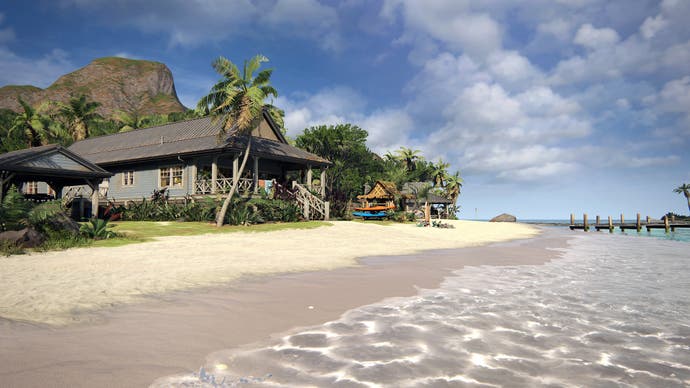
These are but a few examples of glorious locations games gift audiences with. And, of course, they all come with their foibles, quirks and individual characteristic due to their locations, placement, composition, context and so on. However, it is worth celebrating their individuality, as it shows another level of depth to game design and the effect it can have. These are virtual - and literally fictional, in some cases - worlds, but they feel very real and create a sense of belonging, attachment and jealousy. This wonderful sensation of pseudo-topophilia is a curious power that games have, and the art of placemaking in them continues to make it not just a good descriptive word but an actively accurate one.
